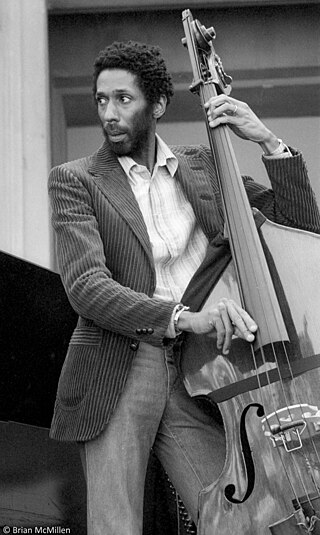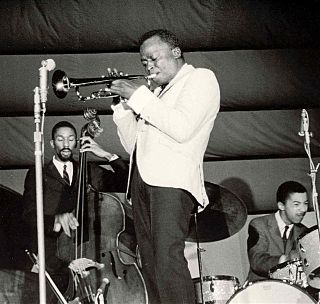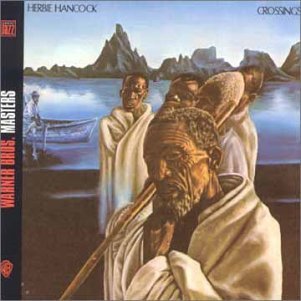With Geri Allen With Gene Ammons With Roy Ayers With Angelo Badalamenti With Chet Baker With Kenny Barron With Sathima Bea Benjamin - Windsong (Ekapa, 1985)
- Love Light (Enja, 1987)
- Southern Touch (Enja, 1989)
- SongSpirit (Ekapa, 2006)
With Art Blakey - Art Blakey and the All Star Messengers (Jazz Line, 1982)
- The Art of Jazz: Live in Leverkusen (In+Out, 1989)
With Ron Carter With Cyrus Chestnut With Norman Connors - Dark of Light (Buddah, 1973)
- Love From The Sun (Buddah, 1973)
With Larry Coryell With Sonny Fortune With Benny Golson With Dexter Gordon With Herbie Hancock With Billy Hart With Eddie Henderson With Buck Hill With Shirley Horn With Bobby Hutcherson With Abdullah Ibrahim With The Jazz Crusaders With Steve Kuhn - Porgy (Evidence, 1988)
- Love Walked In (Venus, 2003)
- Plays Standards (Venus, 2007)
With Harold Land With Harold Mabern With John McNeil - Look to the Sky with Tom Harrell (SteepleChase, 1979)
- John McNeil, Faun (SteepleChase, 1981)
With Meeco - Perfume e Caricias (Connector, 2010)
- Beauty of the Night (Connector, 2012)
With Frank Morgan With David "Fathead" Newman With Houston Person With Wallace Roney With Jimmy Rowles - Paws That Refresh (Choice, 1980)
- The Chess Players (Candid, 2010) recorded 1976
With Hilton Ruiz With Woody Shaw With Sphere With Buddy Terry With The Timeless All Stars With Steve Turre With Stanley Turrentine With McCoy Tyner With Michal Urbaniak - Music for Violin and Jazz Quartet (Jam, 1980)
- Jazz Legends [22] (Ubx, 1998)
With Cedar Walton With Mary Lou Williams With Nancy Wilson With Denny Zeitlin - As Long As There's Music (Venus, 1997)
- Slickrock (MAXJAZZ, 2004)
- Trio in Concert (Sunnyside, 2009)
- Stairway to the Stars (Sunnyside, 2014) – rec. 2001 at The Jazz Bakery
| With Others - Franco Ambrosetti, Wings (Enja, 1984) – rec. 1983. also released as Gin and Pentatonic.
- Ben Aronov, Bob Brookmeyer and Tom Harrell, Shadow Box (Choice, 1979)
- Bill Barron, Jazz Caper (Muse, 1982) – rec. 1978
- Gary Bartz, Episode One: Children of Harlem (Challenge, 1994)
- Cindy Blackman, Arcane (Muse, 1988) – rec. 1987
- Hamiet Bluiett, Dangerously Suite (Soul Note, 1981)
- Donald Brown, Sources of Inspiration (Muse, 1989)
- Ted Brown, In Good Company with Jimmy Raney (Criss Cross, 1985)
- Will Calhoun, Native Lands (Half Note, 2005)
- Betty Carter, The Betty Carter Album (Bet-Car, 1976)
- Billy Childs, Skim Coat (Metropolitan, 1999)
- Cyrus Chestnut, Black Nile (Grave News, 2008)
- Freddy Cole, It's Crazy, But I'm in Love (After 9, 1997)
- Junior Cook, Somethin's Cookin' (Muse, 1981)
- Stanley Cowell, We Three (DIW, 1987)
- Jaiman Crunk, Encounters (Origin, 2012)
- Albert Dailey, That Old Feeling (SteepleChase, 1978)
- Miles Davis, Sorcerer (Columbia, 1967) alt. take of "Limbo" only on CD reissue
- Walter Davis Jr., Illumination (Denon, 1977)
- Kenny Drew, Third Phase (Jazz City, 1989)
- Cornell Dupree, Saturday Night Fever (Versatile, 1977)
- Teddy Edwards, Midnight Creeper (HighNote, 1997)
- Kevin Eubanks, Opening Night (GRP, 1985)
- Gil Evans, Lunar Eclypse (Robi Droli, 1992) – live rec. 1981
- Joe Farrell, Outback (CTI, 1971)
- Bruce Forman, The Bash (Muse, 1982)
- Sonny Fortune, Four in One (Blue Note, 1994)
- Frank Foster, Manhattan Fever (Blue Note, 1968) previously unreleased 1969 session with Buster Williams appended to CD reissue
- Rebecca Coupe Franks, Suit of Armor (Justice, 1992)
- Nnenna Freelon, Nnenna Freelon (Columbia, 1992)
- Chico Freeman, Peaceful Heart, Gentle Spirit (Contemporary, 1980)
- Carlos Garnett, Black Love (Muse, 1974)
- Stan Getz and Jimmie Rowles, The Peacocks (Columbia, 1975)
- Benny Green, In This Direction (Criss Cross, 1989)
- Grant Green, Easy (Versatile, 1978)
- Charles Greenlee, I Know About the Life (Baystate, 1977)
- Winard Harper, Be Yourself (Epicure, 1994)
- Beaver Harris, 360°Experience - A Well-Kept Secret (Shemp, 1980)
- Heads of State, Search for Peace (Smoke Sessions, 2015)
- Albert Heath, Kawaida (O'Be, 1970)
- Joan Hickey, Soulmates (Chicago Lakeside Jazz, 1998)
- John Hicks, On the Wings of an Eagle (Chesky, 2006)
- Billy Higgins, Bridgework (Contemporary, 1987)
- Freddie Hubbard, Outpost (Enja, 1981)
- Robert Irving III, New Momentum (Sonic Portraits, 2007)
- Illinois Jacquet, The Blues; That's Me! (Prestige, 1969)
- Etta Jones, Ms. Jones to You (Muse, 1976)
- Hank Jones, Love for Sale (East Wind, 1976) as The Great Jazz Trio
- Willie Jones, III, Groundwork (Wj3, 2016)
- Rahsaan Roland Kirk, The Return of the 5000 Lb. Man (Warner Bros., 1975)
- Eric Kloss, Essence (Muse, 1973)
- Lee Konitz, Yes, Yes, Nonet (SteepleChase, 1979)
- Prince Lasha and Sonny Simmons, Firebirds (Contemporary, 1968)
- Jeff Lederer, Sunwatcher (Jazzheads, Inc., 2011)
- Charles Lloyd, Acoustic Masters I (Atlantic, 1994)
- Jon Lucien, Mother Nature's Son (Mercury, 1993)
- Marguerite Mariama, Wild Women Never Get the Blues... Well, Not Anymore! (From The Inside Out, 2006)
- Branford Marsalis, Renaissance (Columbia, 1986)
- Bennie Maupin, The Jewel in the Lotus (ECM, 1974)
- Tom McIntosh, With Malice Toward None (IPO, 2004)
- Ken McIntyre, Open Horizon (SteepleChase, 1976)
- Carlos McKinney, Up-Front (Sirocco, 1997)
- René McLean, Watch Out (SteepleChase, 1975)
- Charles McPherson, McPherson's Mood (Prestige, 1969)
- Carmen McRae, I'm Coming Home Again (Buddah, 1980)
- Helen Merrill and Gil Evans Collaboration (EmArcy, 1988)
- Ralph Moore, 623 C Street (Criss Cross, 1987)
- James Morrison and Adam Makowicz, Swiss Encounter (EastWest, 1989)
- Sam Morrison, Dune (Inner City, 1976)
- Alphonse Mouzon, The Essence of Mystery (Blue Note, 1972)
- Tiger Onitsuka, A Time in New York (Savoy, 2008)
- Nathen Page, Page-Ing Nathen (Hugo's Music, 1982)
- Cecil Payne, Bird Gets the Worm (Muse, 1976)
- Emily Remler, East To Wes (Concord,1988)
- Ben Riley, Weaver of Dreams (Joken, 1996)
- Claudio Roditi, Free Wheelin': The Music of Lee Morgan (Reservoir, 1994)
- Red Rodney, Red, White and Blues (Muse, 1978)
- Roots, Saying Something (In+Out, 1995)
- Renee Rosnes, Without Words (Blue Note, 1993)
- Charlie Rouse, The Upper Manhattan Jazz Society with Benny Bailey (Enja, 1985) – rec. 1981
- Carl Saunders, Out of the Blue (SNL, 1995)
- Jim Schapperoew, This One's For Pearle (Kerralee, 1980)
- Jonathan Schwartz, Sings Arthur Schwartz (Muse, 1977)
- Jimmy Smith, Go for Watcha' Know (Blue Note, 1986)
- Dr. Lonnie Smith, The Turbanator (32 Jazz, 2000) – rec. 1991
- Charles Sullivan, Re-Entry (WhyNot, 1976)
- Charles Tolliver, Connect (Gearbox, 2020)
- Sarah Vaughan, Sassy Swings the Tivoli (Mercury, 1963) as "Charles Williams"
- Roseanna Vitro, Listen Here (Texas Rose, 1984)
- Chip White, Harlem Sunset (Postcards, 1994)
- Lenny White, George Colligan and Steve Wilson, Hancock Island: The Music of Herbie Hancock (Chesky, 2008)
- James Williams, The Arioso Touch (Concord Jazz, 1982)
- The Mary Lou Williams Collective, Zodiac Suite: Revisited (Mary, 2006)
- Larry Willis, The Big Push (HighNote, 2006)
- Piotr Wojtasik, Quest (Power Bros, 1997)
|




















